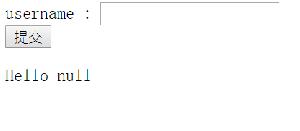ES6中Promise、async和await面试题整理
浏览:51日期:2023-02-12 11:11:15
目录
- 出题目的:
- 知识点:
- 代码:
- 附:promise与async await结合使用
- 总结
学习过程中遇到的一些基础的Promise、async、await面试题整理。
出题目的:
- 考察 Promise、async、await 的基础
- 考察队Event Loop、宏任务、微任务的理解
知识点:
- JS 执行顺序:单线程,自上而下、先同步后异步、先微任务后宏任务
- new promise() -> Promise.resolve(),触发then
- new promise((reject)=>{reject()}) -> promise.reject(),触发catch
- then 和 catch 内部没有 throw new Error 相当于 resolve
- async function 相当于返回 Promise.resolve()
- await 后面的代码都是异步的,微任务;setTimeout是宏任务
- 初始化Promise时,函数内部代码会被立即执行
代码:
考点1:Promise.resolve、Promise.reject执行顺序
Promise.resolve().then(() => { // 优先寻找then
console.log(1);
}).catch(() => {
console.log(2);
})
// 1
Promise.reject().then(() => { // 优先寻找catch
console.log(1);
}).catch(() => {
console.log(2);
})
// 2
考点2:then 和 catch 内部没有 throw new Error() 相当于 resolve
Promise.resolve().then(() => {
console.log(1);
}).catch(() => {
console.log(2);
}).then(() => {
console.log(3);
})
// 1 3
Promise.reject().then(() => {
console.log(1);
}).catch(() => {
console.log(2);
}).then(() => {
console.log(3);
})
// 2 3
Promise.reject().then(() => {
console.log(1);
}).catch(() => {
console.log(2);
throw new Error();
}).then(() => {
console.log(3);
})
// 2 报错
Promise.reject().then(() => {
console.log(1);
}).catch(() => {
console.log(2);
throw new Error();
}).then(() => {
console.log(3);
}).catch(() => {
console.log(4);
})
// 2 4
考点3:async function -> 相当于返回一个 Promise.resolve
const res = async function fn() {
return 100;
}
console.log(res()); // 返回一个resolve状态的Promise对象 Promise {<fulfilled>: 100}
res().then(()=>{
console.log(0);
}).catch(()=>{
console.log(1);
})
// 0
(async function () {
const a = fn();
const b = await fn();
console.log(a); // Promise {<fulfilled>: 100}
console.log(b); // 100
})()
考点4: await 代码执行顺序
async function fn1() {
console.log("fn1 start");
await fn2();
console.log("fn1 end");
}
async function fn2() {
console.log("fn2 start");
}
console.log("start");
fn1();
console.log("end");
/**
* 打印顺序:
* start
* fn1 start
* fn2 start
* end
* fn1 end
*/
async function fn1() {
console.log("fn1 start");
await fn2();
console.log("fn1 end");
await fn3();
console.log("fn3 end");
}
async function fn2() {
console.log("fn2");
}
async function fn3() {
console.log("fn3");
}
console.log("start");
fn1();
console.log("end");
/**
* 打印顺序:
* start
* fn1 start
* fn2
* end
* fn1 end
* fn3
* fn3 end
*/
考点5:Promise 与 setTimeout 执行顺序
console.log("start");
setTimeout(()=>{
console.log("setTimeout")
});
Promise.resolve().then(()=>{
console.log("Promise")
})
console.log("end")
/**
* 打印顺序:
* start
* end
* Promise
* setTimeout
*/
async function fn1() {
console.log("fn1 start");
await fn2();
console.log("fn1 end"); // await后面的代码为"微任务代码"
}
async function fn2() {
console.log("fn2");
}
console.log("start");
setTimeout(()=>{
console.log("setTimeout"); // 宏任务
});
fn1();
console.log("end");
/**
* 打印顺序:
* start
* fn1 start
* fn2
* end
* fn1 end
* setTimeout
*/
附:promise与async await结合使用
昨天看了一道字节外包的面试题
const list = [1, 2, 3];
const square = num => {
return new Promise((resolve, reject) => {
setTimeout(() => {
resolve(num * num);
}, 1000);
});
}
function test() {
// 修改这里的代码
list.forEach(async x => {
const res = await square(x);
console.log(res);
});
}
test()
需要修改的是把同步执行的数组替换成换成异步打印。
在测试以后我们可以-验证,forEach和for循环不同的是for循环可以修改数组的值,且forEach取不到具体某一项的值,这里的异步说的是每执行一次数组循环,就执行一步test()方法,
const list = [1, 2, 3];
const square = num => {
return new Promise((resolve, reject) => {
setTimeout(() => {
resolve(num * num);
}, 1000);
});
}
function test() {
for(let x of list) {
var res = await square(x)
console.log(res)
}
}
test()
总结
到此这篇关于ES6中Promise、async和await面试题整理的文章就介绍到这了,更多相关ES6 Promise、async、await面试题内容请搜索以前的文章或继续浏览下面的相关文章希望大家以后多多支持!
标签:
JavaScript
- 排行榜

- jsp中文乱码问题的简单解决方法
- 1. input submit、button和回车键提交数据详解
- 2. 我的论坛源代码(五)
- 3. .Net Core 配置文件读取IOptions,IOptionsMonitor,IOptionsSnapshot
- 4. 关于JavaScript的Array数组方法详解
- 5. IE浏览器在post提交时中文乱码是什么原因?解决方法介绍
- 6. 基于javaweb+jsp实现企业车辆管理系统
- 7. IE6/IE7/IE8/IE9中tbody的innerHTML不能赋值的完美解决方案
- 8. jsp实现简单用户7天内免登录
- 9. Golang全局变量加锁的问题解决
- 10. asp中将字符串转数字的函数小结
 网公网安备
网公网安备